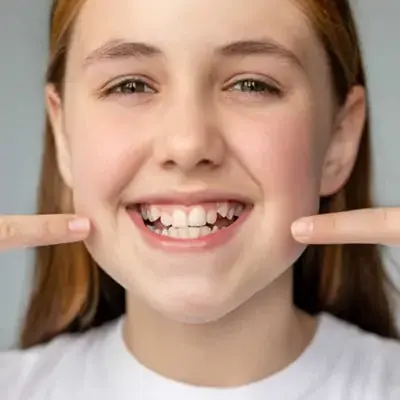Surgical Options for Correcting Crooked Teeth and Jaws
- Huda Batool
- Apr 23, 2024
- 3 min read
Crooked teeth and misaligned jaws can affect more than just your smile. They can cause difficulty in chewing, speaking, and even breathing. While braces and retainers are common solutions, Crooked Teeth Treatment in Dubai surgical options are available for more complex cases. This article explores these surgical solutions to correct crooked teeth and jaws, focusing on their benefits, risks, and what to expect during the recovery process.
Understanding the Problem: Crooked Teeth and Misaligned Jaws
Crooked teeth and misaligned jaws, also known as malocclusions, can occur due to genetics, developmental issues, or injury. This misalignment can lead to various dental and health issues, including:
Chewing difficulties
Speech impediments
Increased risk of tooth decay and gum disease
Jaw pain or temporomandibular joint (TMJ) disorders
Addressing these issues with surgical intervention can significantly improve oral health and overall quality of life.

Surgical Options for Correcting Crooked Teeth and Jaws
There are several surgical options available, depending on the severity of the misalignment and the specific needs of the patient. Below are some of the most common procedures used to correct crooked teeth and jaws.
Orthognathic Surgery (Jaw Surgery)
Orthognathic surgery, commonly referred to as jaw surgery, is a procedure to correct severe misalignments between the upper and lower jaws. It can involve cutting and realigning the jawbones to ensure proper occlusion (bite). This type of surgery is often performed in conjunction with orthodontic treatment to ensure the teeth align correctly after the jaw has been repositioned.
Maxillary Osteotomy
A maxillary osteotomy is a surgical procedure used to correct misalignment in the upper jaw. The surgeon makes precise cuts in the upper jawbone, allowing it to be repositioned to correct the bite. This surgery is commonly used to address overbites and open bites.
Mandibular Osteotomy
Mandibular osteotomy is a similar procedure to correct misalignment in the lower jaw. The surgeon cuts the lower jawbone to reposition it into a more optimal position. This surgery is often used to correct underbites and other lower jaw misalignments.
Genioplasty (Chin Surgery)
Genioplasty is a surgical option used to reshape or reposition the chin. It can be combined with other jaw surgeries to achieve facial balance and harmony. This procedure can improve both functional and aesthetic aspects of the lower face.
Impacted Wisdom Teeth Removal
Impacted wisdom teeth can contribute to crooked teeth and misalignment. Removing these teeth surgically can help prevent or correct these issues, ensuring that other teeth have the space they need to align properly.
Benefits of Surgical Correction
Surgical options for correcting crooked teeth and jaws offer numerous benefits, including:
Improved bite and chewing function
Reduced jaw pain and TMJ symptoms
Enhanced speech clarity
Aesthetic improvements to facial structure
Reduced risk of dental issues like decay and gum disease
Patients who undergo surgical correction often experience a significant boost in confidence due to their improved appearance and function.
Risks and Considerations
As with any surgical procedure, there are risks and considerations to keep in mind. These may include:
Infection and bleeding
Swelling and bruising
Prolonged recovery time
Need for additional orthodontic treatment
Possible relapse or need for further surgery
It's essential to discuss these risks with your surgeon to ensure you have a clear understanding of what to expect.
Recovery and Aftercare
Recovery from surgical procedures to correct crooked teeth and jaws varies depending on the extent of the surgery. Here are some common aspects of the recovery process:
Hospital stay: Some procedures may require an overnight stay in the hospital.
Dietary restrictions: You may need to follow a liquid or soft food diet during the initial recovery period.
Pain management: Pain and discomfort are common, but your surgeon will prescribe medication to help manage it.
Follow-up appointments: Regular visits to your orthodontist and surgeon are crucial to ensure proper healing and alignment.
Orthodontic treatment: Braces or retainers are often required to maintain alignment after surgery.
Conclusion
Surgical options for correcting crooked teeth and jaws can provide significant benefits for patients with severe malocclusions. These procedures offer improved functionality and aesthetics, contributing to better oral health and overall quality of life. However, it's essential to weigh the risks and recovery requirements before deciding on surgery. Consult with your orthodontist and surgeon to determine the best course of action for your specific needs.


